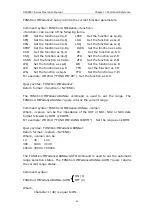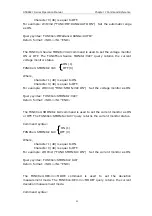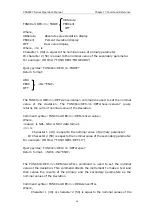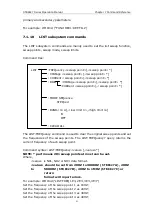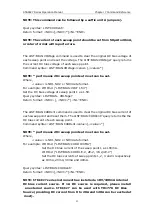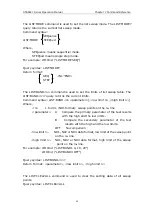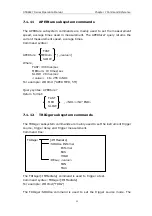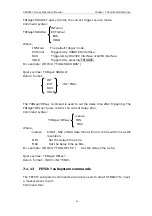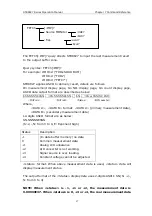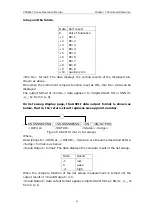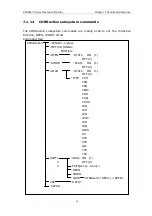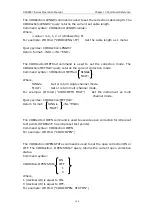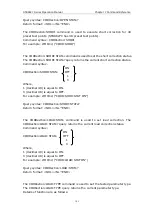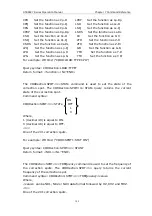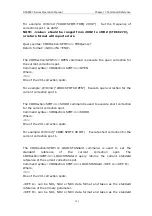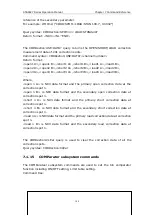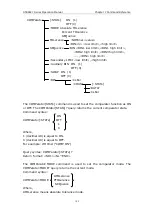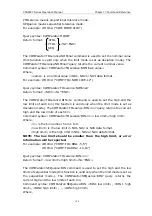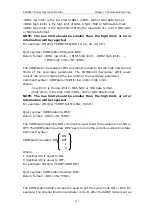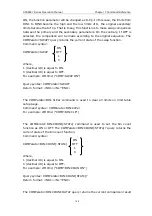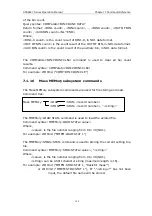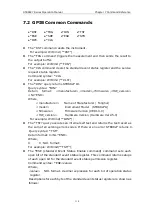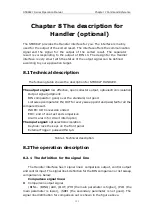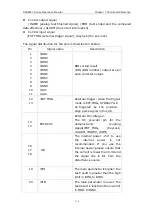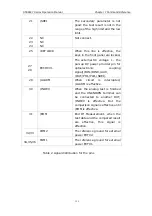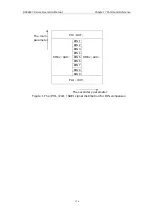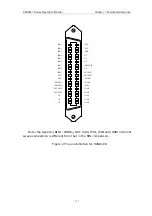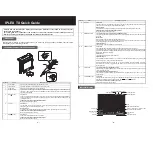
STB8827
Series Operation Manual Chapter 7 Command Reference
CPD Set the function as Cp-D LPRP Set the function as Lp-Rp
CPQ Set the function as Cp-Q LSD Set the function as Ls-D
CPG Set the function as Cp-G LSQ Set the function as Ls-Q
CPRP Set the function as Cp-Rp LSRS Set the function as Ls-Rs
CSD Set the function as Cs-D RX Set the function as R-X
CSQ Set the function as Cs-Q ZTD Set the function as Z-
θ
102
◦
CSRS Set the function as Cs-Rs ZTR Set the function as Z-
θ
r
LPQ Set the function as Lp-Q GB Set the function as G-B
LPD Set the function as Lp-D YTD Set the function as Y-
θ
◦
LPG Set the function as Lp-G YTR Set the function as Y-
θ
r
For example: WrtCmd (“CORR:LOAD:TYPE CPD”)
Query syntax: CORRection:LOAD:TYPE?
Return format: <function><NL^END>
The CORRection:SPOT<n>:STATe command is used to set the state of the
correction spot. The CORRection:SPOT<n>:STATe query returns the current
state of the correction spot.
Command syntax:
ON
CORRection:SPOT<n>:STATe OFF
1
0
Where,
1 (decimal 49) is equal to ON.
0 (decimal 48) is equal to OFF.
<n>:
One of the 201 correction spots.
For example: WrtCmd (“CORR:SPOT1:STAT ON”)
Query syntax: CORRection:SPOT<n>:STATe?
Return format: <NR1><NL^END>
The CORRection:SPOT<n>:FREQuency command is used to set the frequency of
the correction spots. The CORRection:SPOT<n> query returns the current
frequency of the correction spot.
Command syntax: CORRection:SPOT<n>:FREQeuency<value>
Where,
<value> can be NR1, NR2 or NR3 data format followed by HZ, KHZ and MHZ.
<n>:
One of the 201 correction spots.

